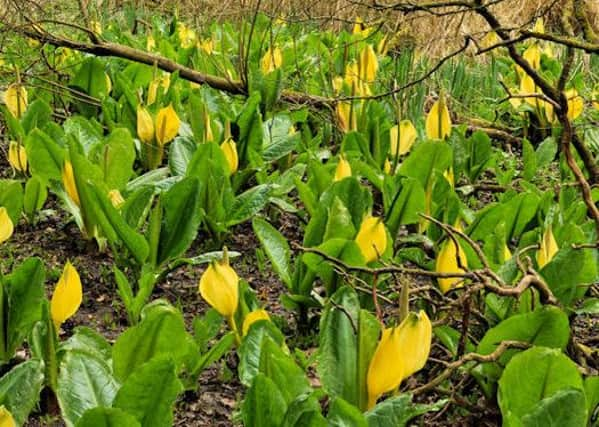Bid to stop plant which smells of rotting flesh


American Skunk Cabbages, a non-native plant, has been spied on the river Tweed, as well as in the Highlands and the central belt.
They have already smothered streams in Dumfriesshire and Cumbria.
Advertisement
Hide AdAdvertisement
Hide AdWith bright yellow flowers and shiny broad leaves, the huge plants, which grow vigorously on damp areas such as wetlands and ditches, can grow up to 1.5m high.
With no natural predators, numbers can quickly get out of hand and the plants grow so thick and fast that they choke other aquatic life.
Known in Latin as Lysichiton americanus, the popular ornamental plants will soon be banned.
Emily Iles is a project officer for the Tweed Forum, an umbrella organisation of groups including those with an environmental interest in the area around the River Tweed.
It has been running the Tweed Invasives project for the last 14 years in a bid to educate the public.
She said of the plants: “They’re a very big problem when they get established. They’re in the Forth catchment area and in the Highlands.
“I used to work on the river Nith and that course is completely smothered.
“They’re ornamental plants, we think they were brought in in the 1800s. They just end up getting transported down the water from seeds.
Advertisement
Hide AdAdvertisement
Hide Ad“They basically shade out other plants because they grow so quickly.
She added: “The flower puts up a bright yellow flag and when it dies back, I think that’s when the pungent smell starts.
“If you’ve got hundreds of them, they can get quite smelly.”
A new EU regulation in December highlighted American Skunk Cabbages as being a matter of “union concern”, meaning a problem to both Scotland and England, and new rules are coming into force to ban them from being sold.
Members of the Tweed Forum, Scottish Natural Heritage, and the Royal Botanical Gardens of Edinburgh are also to meet to discuss how to manage the risk.
The plants are not the only non-native threat to Scotland’s rivers.
American crayfish, a voracious predator, have devastated wild fish stocks since they were first found in 2011.
And Giant Hogweed, originally from South Russia, has been deemed a public health hazard as toxins in its sap cause react with sunlight, causing human skin to blister.
